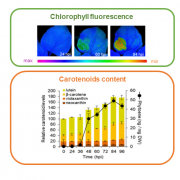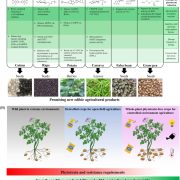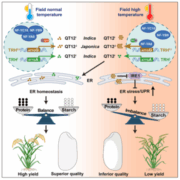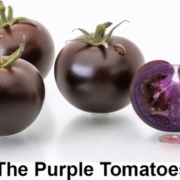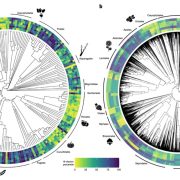Review. Sustainable protein production: Opportunities for cereals
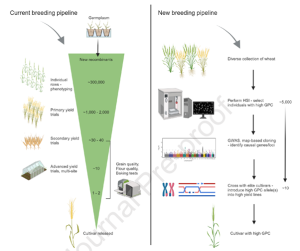 As the world’s population increases, protein production must increase. If not, levels of protein malnutrition leading to stunted growth, hair loss, and edema will rise. Here Safdar et al. propose that cereals could be bred to be major protein sources. They argue that cereals already make up approximately 50% of our daily calories, so adopting cereals as a protein source would not require a major shift in dietary habits. The largest challenge lies in increasing grain protein content without impacting yield. One promising solution involves the transcription factor HB-2. Increasing HB-2 transcript levels in wheat led to increased hydraulic conductance and greater translocation of nitrogen-rich assimilates to grain. This resulted in approximately 25% more protein in the grains without a loss in yield. The authors also highlight the importance of developing high-throughput, non-destructive methods of assaying protein content, such as hyperspectral imaging, which would allow protein content analysis to be more easily incorporated into breeding programs without requiring excessive time and labor. All in all, increasing protein content in cereals could be a sustainable way of meeting our increasing protein demands. (Summary by Rose McNelly @Rose_McN) Plant Comms. 10.1016/j.xplc.2023.100716
As the world’s population increases, protein production must increase. If not, levels of protein malnutrition leading to stunted growth, hair loss, and edema will rise. Here Safdar et al. propose that cereals could be bred to be major protein sources. They argue that cereals already make up approximately 50% of our daily calories, so adopting cereals as a protein source would not require a major shift in dietary habits. The largest challenge lies in increasing grain protein content without impacting yield. One promising solution involves the transcription factor HB-2. Increasing HB-2 transcript levels in wheat led to increased hydraulic conductance and greater translocation of nitrogen-rich assimilates to grain. This resulted in approximately 25% more protein in the grains without a loss in yield. The authors also highlight the importance of developing high-throughput, non-destructive methods of assaying protein content, such as hyperspectral imaging, which would allow protein content analysis to be more easily incorporated into breeding programs without requiring excessive time and labor. All in all, increasing protein content in cereals could be a sustainable way of meeting our increasing protein demands. (Summary by Rose McNelly @Rose_McN) Plant Comms. 10.1016/j.xplc.2023.100716



